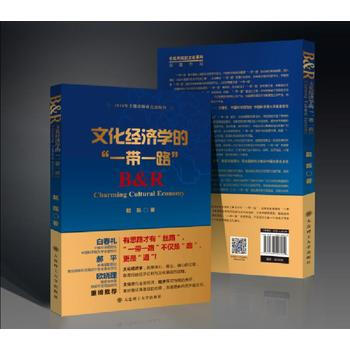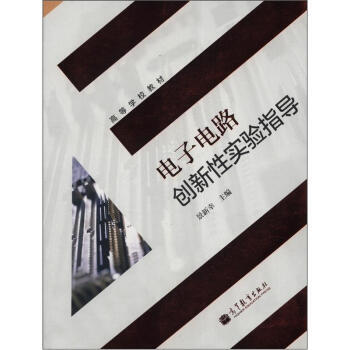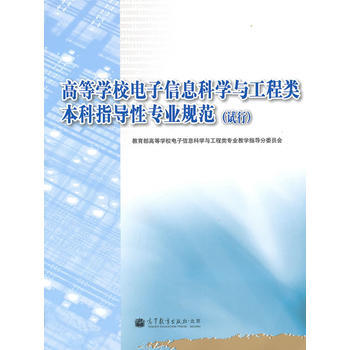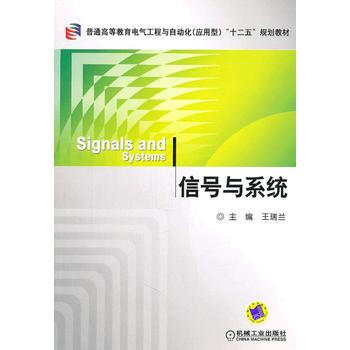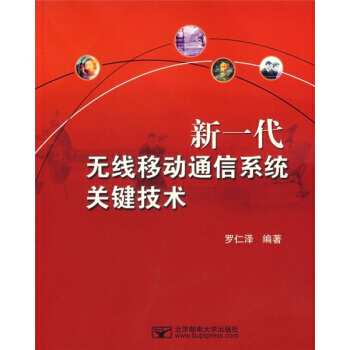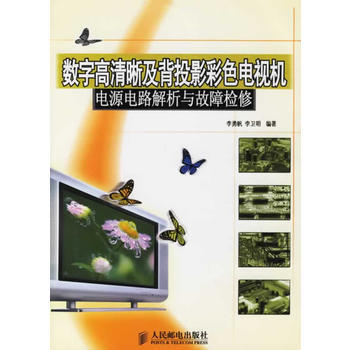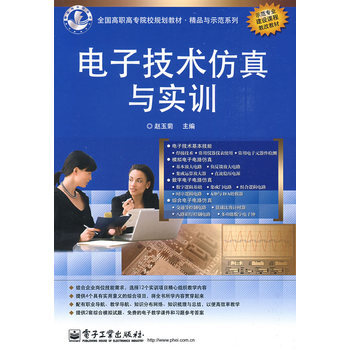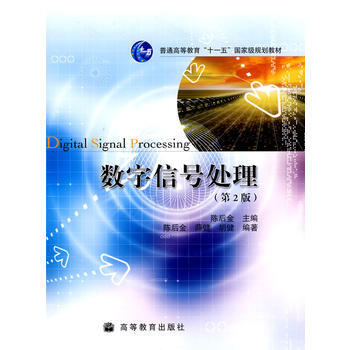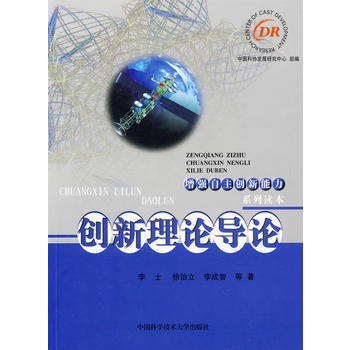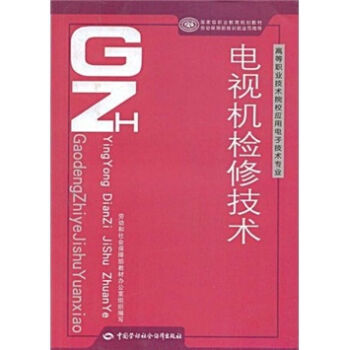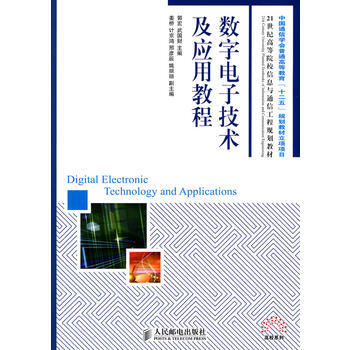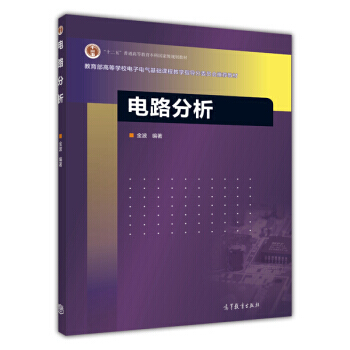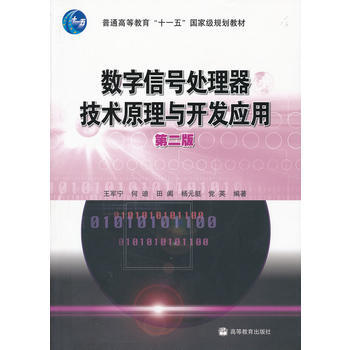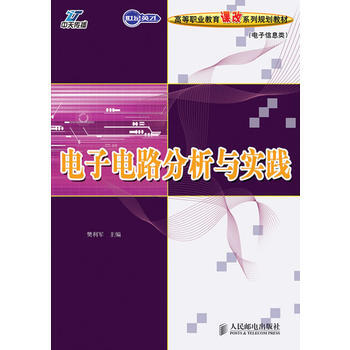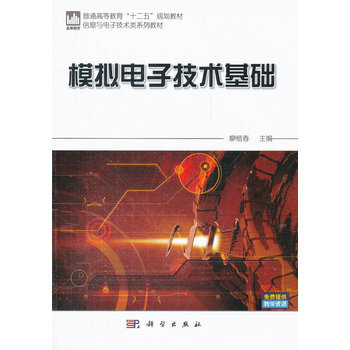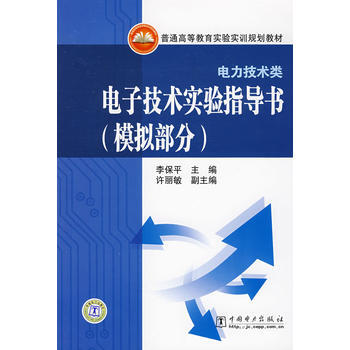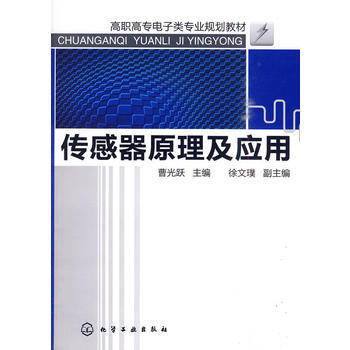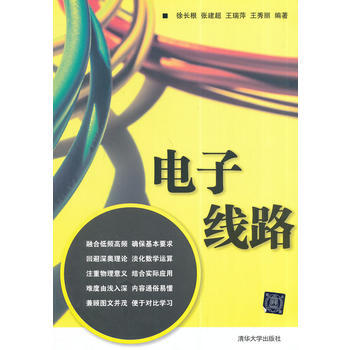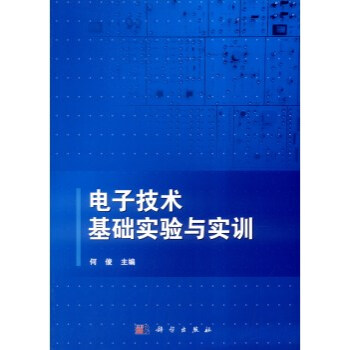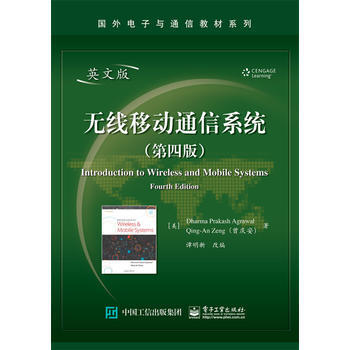

具体描述
基本信息
书名:无线移动通信系统(第四版)(英文版)
定价:89.00元
售价:60.5元,便宜28.5元,折扣67
作者: Dharma P. Agrawal(D. P. 阿格拉沃尔)
出版社:电子工业出版社
出版日期:2016-04-01
ISBN:9787121285134
字数:
页码:
版次:1
装帧:平装
开本:16开
商品重量:0.4kg
编辑推荐
本书覆盖了无线移动通信所涉及的各个主题,还提供了开拓思维的实验项目,是无线移动通信本科课程的理想双语教材。
内容提要
本书系统、全面地介绍了无线移动通信的基本理论,分析了无线移动通信所涉及的各个主题,包括无线移动信号的传输、蜂窝的基本概念、多路无线接入、多址技术、调制技术、信道分配技术、通信系统的设计、网络协议、现有的蜂窝系统、IEEE 802系列技术、Ad Hoc网络与传感器网络、无线网络的安全性与隐私问题、卫星通信系统等。为了加强对书中概念的理解,各章还给出了开拓思维的实验。
目录
目 录CHAPTER 1 Introduction 11.1 History of Cellular Systems 11.2 Characteristics of Cellular Systems 121.3 Fundamentals of Cellular Systems 151.4 Cellular System Infrastructure 211.5 Network Protocols 241.6 IEEE 802.11 Technologies 241.7 Ad Hoc Networks 251.8 Sensor Networks 261.9 Wireless MANs, LANs, BANs, and PANs 271.10 Security and Privacy in Wireless Networks 281.11 Satellite Systems 281.12 Recent Advances 291.13 Outline of the Book 291.14 References 301.15 Problems 31Chapter 2 Mobile Radio Propagation 332.1 Introduction 332.2 Types of Radio Waves 332.3 Propagation Mechanisms 342.4 Free Space Propagation 352.5 Land Propagation 372.6 Path Loss 392.7 Slow Fading 412.8 Fast Fading 432.8.1 Statistical Characteristics of the Envelope 432.8.2 Characteristics of Instantaneous Amplitude 462.9 Doppler Effect 482.10 Delay Spread 502.11 Intersymbol Interference 512.12 Coherence Bandwidth 522.13 Cochannel Interference 522.14 Summary 532.15 References 532.16 Experiments 542.17 Open-Ended Projects 552.18 Problems 55Chapter 3 Cellular Concept 583.1 Introduction 583.2 Cell Area 583.3 Signal Strength and Cell Parameters 603.4 Capacity of a Cell 643.5 Frequency Reuse 663.6 How to Form a Cluster 673.7 Cochannel Interference 703.8 Cell Splitting 723.9 Cell Sectoring 723.10 Summary 753.11 References 753.12 Experiments 753.13 Open-Ended Projects 773.14 Problems 77Chapter 4 Multiple Radio Access 814.1 Introduction 814.2 Multiple Radio Access Protocols 824.3 Contention-Based Protocols 834.3.1 Pure ALOHA 844.3.2 Slotted ALOHA 854.3.3 CSMA 864.3.4 CSMA/CD 904.3.5 CSMA/CA 914.4 Comparison of CSMA/CD and CSMA/CA 954.5 Summary 954.6 References 954.7 Experiments 974.8 Open-Ended Projects 984.9 Problems 98Chapter 5 Multiple Division Techniques 1005.1 Introduction 1005.2 Concepts and Models for Multiple Divisions 1005.2.1 FDMA 1015.2.2 TDMA 1035.2.3 CDMA 1055.2.4 OFDM 1105.2.5 SDMA 1125.2.6 Comparison of Multiple Division Techniques 1135.3 Modulation Techniques 1145.3.1 Amplitude Modulation (AM) 1145.3.2 Frequency Modulation (FM) 1145.3.3 FSK 1165.3.4 Phase Shift Keying (PSK) 1165.3.5 Quadrature Phase Shift Keying (QPSK) 1175.3.6 π/4QPSK 1175.3.7 Quadrature Amplitude Modulation (QAM) 1195.3.8 16QAM 1195.4 Summary 1205.5 References 1215.6 Experiments 1215.7 Open-Ended Projects 1225.8 Problems 122Chapter 6 Channel Allocation 1256.1 Introduction 1256.2 Static Allocation versus Dynamic Allocation 1266.3 Fixed Channel Allocation (FCA) 1266.3.1 Simple Borrowing Schemes 1276.3.2 Complex Borrowing Schemes 1276.4 Dynamic Channel Allocation (DCA) 1306.4.1 Centralized Dynamic Channel Allocation Schemes 1306.4.2 Distributed Dynamic Channel Allocation Schemes 1316.5 Hybrid Channel Allocation (HCA) 1326.5.1 Hybrid Channel Allocation (HCA) Schemes 1326.5.2 Flexible Channel Allocation Schemes 1336.6 Allocation in Specialized System Structure 1336.6.1 Channel Allocation in One-Dimensional Systems 1336.6.2 Reuse Partitioning-Based Channel Allocation 1346.6.3 Overlapped Cells–Based Channel Allocation 1356.7 System Modeling 1376.7.1 Basic Modeling 1376.7.2 Modeling for Channel Reservation 1396.8 Summary 1406.9 References 1416.10 Experiments 1416.11 Open-Ended Projects 1436.12 Problems 143Chapter 7 Mobile Communication Systems 1477.1 Introduction 1477.2 Cellular System Infrastructure 1477.3 Registration 1517.4 Handoff Parameters and Underlying Support 1537.4.1 Parameters Influencing Handoff 1537.4.2 Handoff Underlying Support 1547.5 Roaming Support 1567.5.1 Home Agents, Foreign Agents, and Mobile IP 1577.5.2 Rerouting in Backbone Routers 1597.6 Multicasting 1617.7 Ultra-Wideband Technology 1647.7.1 UWB System Characteristics 1647.7.2 UWB Signal Propagation 1657.7.3 Current Status and Applications of UWB Technology 1657.7.4 Difference between UWB and Spread Spectrum Techniques 1667.7.5 UWB Technology Advantages 1667.7.6 UWB Technology Drawbacks 1677.7.7 Challenges for UWB Technology 1677.7.8 Future Directions 1687.8 Femto Cell Network 1
作者介绍
Dharma Prakash Agrawal 博士,美国俄亥俄州教育局计算机科学与工程专业杰出教授,美国辛辛那提大学电气工程与计算机科学系分布式移动计算中心的创办主任。他获得了IEEE计算机学会的众多证书和奖励,并被选为核心成员,他还是ACM、AAAS和WIF会士,美国国家发明家科学院的会员,2008年获得哈里谷德奖(IEEE CS Harry Goode Award)。Qing-An Zeng(曾庆安) 1997年于日本静岗大学获得电子工程学博士学位,毕业后进入日本电气株式会社(NEC),从事第三代移动通信系统的开发和研究,曾作为NEC的两名专家代表之一参加了第三代移动通信系统的数据层和网络层的标准制定工作,还作为NEC的专家代表参加了香港第三代移动通信系统的选定工作。1999年,他被美国辛辛那提大学聘为教授、博士生导师。他还是IEEE高级会员。
文摘
序言
用户评价
说实话,要完全啃完这本书的每一个细节,对时间和精力的要求是相当高的。我尝试着精读了其中关于信道编码和调制的章节,发现作者对现代通信系统中最核心的数学工具运用得炉火纯青。比如,在讨论MIMO系统性能增益时,书中引入的矩阵代数和概率论工具,没有丝毫的拖泥带水,直接指向了核心的性能瓶颈和优化方向。我注意到,书中引用的参考资料和脚注非常详尽,这体现了作者严谨的学术态度和对知识体系的尊重。每当我在阅读过程中产生疑问,例如某个参数选择的合理性时,往往能在后面的章节中找到更宏观的解释,或者通过交叉引用找到相关的理论基础。这使得整本书形成了一个有机联系的整体,而不是一堆孤立的技术点的堆砌。对于想要深入到算法设计层面而不是仅仅停留在应用层调参的工程师来说,这本书提供的深度是无可替代的。当然,如果读者是初次接触移动通信领域的新手,可能需要搭配一些更基础的入门教材辅助理解,因为这本书的起点设置得比较高。
评分我是在一个远程学习小组中开始接触这本书的,我们小组的成员背景各异,有搞射频的,有做软件定义的网络(SDN)的。这本书最宝贵的一点是它提供的通用语言。尽管我的专长更偏向于协议栈的上层,但书中对物理层和MAC层设计决策的阐述,让我能够更清晰地理解为什么我们在应用层需要设计那样的传输机制。例如,它对时延、抖动和吞吐量这三个核心指标在不同技术代际间是如何权衡和演进的分析,简直是教科书级别的案例研究。我尤其欣赏作者在描述不同标准组织(如3GPP)的演进路径时所采用的客观视角,没有过度渲染新技术的光环,而是冷静地分析了每一步技术飞跃背后的工程妥协。这种不偏不倚的叙事方式,使得这本书超越了特定一代技术的限制,成为了一部跨越时空的通信原理宝典。它能帮助我们思考,当我们展望下一个十年时,哪些设计原则是永恒的,哪些是需要被彻底颠覆的。
评分我最近一直在梳理我对前几代移动通信技术的认知盲区,希望能为我当前参与的某个前沿项目提供更深层次的理论支撑。这本书的内容广度让人印象深刻,它没有停留在对最新标准的好奇表面,而是深入挖掘了各个技术迭代背后的驱动力、关键的物理层和介层协议的设计哲学。比如,在探讨扩频技术那部分时,作者的论述逻辑性极强,从噪声抑制的数学模型推导到实际系统中如何通过编码实现抗干扰,环环相扣,层层递进,没有任何含糊其辞的地方。我特别喜欢它采用的“问题导向”的叙事方式,先抛出一个实际通信中遇到的难题,然后逐步引入所需的理论工具去解决它,这种教学方法比起单纯罗列公式要高效得多。对于我这种已经有一定工作经验的专业人士来说,它提供了一个绝佳的“校准”机会,让我能够重新审视那些在日常工作中被简化或略过的基础环节。这本书的覆盖面很广,从早期的蜂窝概念到更复杂的资源调度机制,都给出了相当细致的分析,绝非市面上那些肤浅的“速成”读物可比拟。
评分这本书的封面设计着实是下了番功夫的,那种沉稳的蓝色调,配上醒目的白色标题字体,一眼看过去就给人一种专业、严谨的感觉。我是在一个技术研讨会上偶然看到这本书的实体的,当时就被它厚重的质感吸引了。书脊上的烫金字体在灯光下微微反光,显示出出版方的用心。内页的纸张质量也相当不错,不是那种容易反光的廉价纸张,阅读起来眼睛不容易疲劳,这对于需要长时间盯着屏幕和书本的工程师来说,简直是福音。我当时翻阅了几页,发现排版布局非常清晰,图表和公式的插图清晰度极高,即便是复杂的系统架构图,也能一目了然。虽然我主要关注的是最新的5G和未来的6G技术,但这本书的经典性让我忍不住想深入了解其基础的理论框架是如何构建起来的。很多新技术的突破,说到底还是建立在这些经典理论之上的,所以拥有这样一本扎实的基础读物,绝对是值得的投资。它不仅仅是一本书,更像是一个可以放在案头随时查阅的参考手册,其物理形态本身就传递出一种权威感。我特别欣赏它在细节上的处理,比如章节标题的字体大小和行间距的平衡,都达到了教科书级别的标准。
评分从一个侧重于系统集成和部署的角度来看,这本书的价值在于其“全景图”的绘制能力。很多市面上的书籍往往只聚焦于某个细分领域,比如OFDM的优化,或者某个特定标准的具体帧结构。而这本书却能把不同技术层面的相互依赖性清晰地展示出来。比如,它会详细讲解为什么频谱效率的提升往往是以增加非线性失真为代价的,以及基带处理如何反过来影响了射频前端的功耗预算。这种自顶向下又自底向上的审视方法,对于需要进行复杂系统架构选型的人来说,提供了极大的决策支持。我注意到,书中的某些图示,特别是关于功率控制和切换算法的流程图,非常适合用于向非技术背景的管理者或项目发起人解释复杂的技术约束。它不是一本用来快速学习某个新特性的工具书,而是一本用来建立坚实理论大厦的基石。读完后,你会发现自己看任何新的技术白皮书时,都会不自觉地用这本书里学到的框架去解构和评估其中的技术方案的合理性。
相关图书
本站所有内容均为互联网搜索引擎提供的公开搜索信息,本站不存储任何数据与内容,任何内容与数据均与本站无关,如有需要请联系相关搜索引擎包括但不限于百度,google,bing,sogou 等
© 2025 book.idnshop.cc All Rights Reserved. 静思书屋 版权所有

